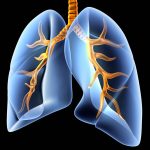Antiepileptics Increase The Risk Of Parkinson’s Disease (PD) – New Study

According to a new study, taking antiepileptic drugs (AEDs) increases your risk of Parkinson’s disease. Drawing on data from the UK Biobank, investigators compared over 1400 individuals diagnosed with PD to matched control persons and found a considerably higher risk of developing PD among those who had taken (AEDs) in comparison with those who had not. There was a trend linking a greater number of AED prescriptions and multiple AEDs associated with a greater risk for PD.
“We observed an association between the most commonly prescribed antiepileptic drugs in the UK and Parkinson’s disease using data from UK Biobank,” senior author Alastair Noyce, PhD, professor of neurology and neuroepidemiology and honorary consultant neurologist, Queen Mary University of London, United Kingdom, told Medscape Medical News.
“This is the first time that a comprehensive study of the link between AEDs and PD has been undertaken,” said Noyce.
He added that the findings have no immediate clinical implications, “but further research is definitely needed, [as] this is an interesting observation made in a research setting.”
The study was published online December, 27 in JAMA Neurology.
Plausible, but Unclear Link
Recent observational studies have found a “temporal association” between
epilepsy and incident PD, but the mechanism underlying this association is “unclear,” the authors write.
It is “plausible” that AEDs “may account for some or all of the apparent association between epilepsy and PD” and that movement disorders are potential side effects of AEDs, but the association between AEDs and PD has “not been well studied,” so it remains “unclear” whether AEDs play a role in the association.
“We have previously reported an association between epilepsy and PD in several different datasets. Here, we wanted to see if it could be explained by an association with the drugs used to treat epilepsy rather than epilepsy per se,” Noyce explained.
Are AEDs the Culprit?
The researchers used data from the UK Biobank, a longitudinal cohort study with more than 500,000 participants, as well as linked primary care medication data to conduct a nested case-control study to investigate this potential association. Participants ranged in age from 40 to 69 years and were recruited between 2006 and 2010.
The researchers compared 1433 individuals diagnosed with PD to 8598 control persons who were matched in a 6:1 ratio for age, sex, race, ethnicity, and socioeconomic status (median [interquartile range] age, 71 [65 – 75] years; 60.9% men; 97,5% White).
Of those with PD, 4.3% had been prescribed an AED prior to the date of their being diagnosed with PD, compared to 2.5% in the control group; 4.4% had been diagnosed with epilepsy, compared with 1% of the control persons.
The strongest evidence was for the association between lamotrigine, levetiracetam, and sodium valproate and PD. There was “weaker evidence” for carbamazepine, although all the AEDs were associated with a higher risk of PD.
| AED | OR (95% CI) | P value |
| Any | 1.80 (1.35 – 2.40) | 6.93 × 10−5 |
| Carbamazepine | 1.43 (0.97 – 2.11) | .07 |
| Lamotrigine | 2.83 (1.53 – 5.25) | 9.29 × 10−4 |
| Levetiracetam | 3.02 (1.51 – 6.05) | 1.85 × 10−3 |
| Sodium valproate | 3.82 (2.41 – 6.05) | 1.17 × 10−8 |
The odds of incident PD were higher among those who were prescribed ≥1 AEDs and among individuals who were issued a higher number of prescriptions, the authors report.
It is possible that it is the epilepsy itself that is associated with the risk of PD, rather than the drugs, and that “likely explains part of the association we are seeing,” said Noyce.
“The bottom line is that more research into the links between epilepsy — and drugs used to treat epilepsy — and PD is needed,” he said.
Moreover, “only with time will we work out whether the findings hold any real clinical relevance,” he added.
Alternative Explanations
Commenting on the research for Medscape Medical News, Rebecca Gilbert, MD, PhD, chief scientific officer, American Parkinson Disease Association, said, “It has been established in prior research that there is an association between epilepsy and PD.” The current study “shows that having had a prescription written for one of four antiepileptic medications was associated with subsequently receiving a diagnosis of PD.”
Although one possible conclusion is that the AEDs themselves increase the risk of developing PD, “there seem to be other alternative explanations as to why a person who had been prescribed AEDs has an increased risk of receiving a diagnosis of PD,” said Gilbert, an associate professor of neurology at Bellevue Hospital Center, New York City, who was not involved with the current study.
For example, pre-motor changes in the brain of persons with PD “may increase the risk of requiring an AED by potentially increasing the risk of having a seizure,” and “changes in the brain caused by the seizures for which AEDs are prescribed may increase the risk of PD.”
Moreover, psychiatric changes related to PD may have led to the prescription for AEDs, since at least two of the AEDs are also prescribed for mood stabilization, Gilbert suggested.
“An unanswered question that the paper acknowledges is, what about people who receive AEDs for reasons other than seizures? Do they also have an increased risk of PD? This would be an interesting population to focus on because it would remove the link between AEDs and seizure and focus on the association between AEDs and PD,” Gilbert said.
She emphasized that people who take AEDs for seizures “should not jump to the conclusion that they must come off these medications so as not to increase their risk of developing PD.” She noted that having seizures “can be dangerous ― injuries can occur during a seizure, and if a seizure can’t be stopped or a number occur in rapid succession, brain injury may result.”
For these reasons, people with “a tendency to have seizures need to protect themselves with AEDs” and “should certainly reach out to their neurologists with any questions” Gilbert stated.
The Preventive Neurology Unit is funded by Barts Charity. The Apocrita High Performance Cluster facility, supported by Queen Mary University London Research–IT Services, was used for this research. Noyce has received grants from Barts Charity, Parkinson’s UK, Cure Parkinson’s, the Michael J. Fox Foundation, Innovate UK, Solvemed, and Alchemab and personal fees from AstraZeneca, AbbVie, Zambon, BIAL, uMedeor, Alchemab, Britannia, and Charco Neurotech outside the submitted work. The other authors’ disclosures are listed on the original article. Gilbert reports no relevant financial relationships.
JAMA Neurol. Published online December 27, 2022. Abstract





